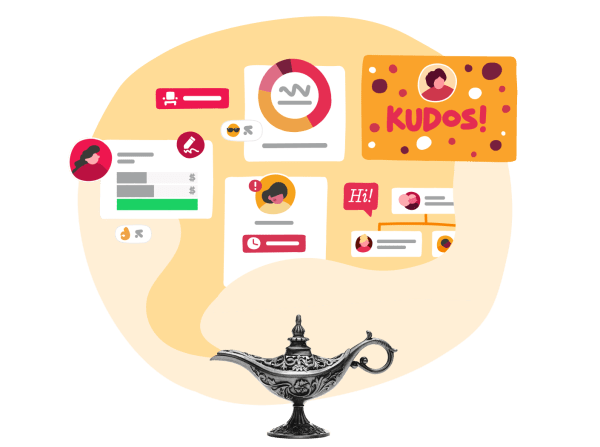Businesses around the world are evolving their processes and embracing automation.
For many, automation has become a key strategy for enhancing operational efficiency and freeing people up from manual tasks that can be more effectively and accurately completed by automated processes.
For HR teams, automation is especially valuable, as it can free up your resources to concentrate on higher-level tasks that help move your human resources strategy forward.
If you’re burdened by data entry and manual tasks, then you’re likely craving time to pursue the thing that initially inspired you to work in human resources—connecting with your people.
As HR professionals, leveraging modern Human Capital Management (HCM) systems for intelligent human resources automation strategies enables you to put your interpersonal skills and human insight to use more effectively—better aligning your day-to-day operations with the organization’s broader goals.
In this guide, we’ll look at:
- How automation benefits management and team members alike
- What tasks HR leaders should consider automating
- Which systems are best for automating human resources
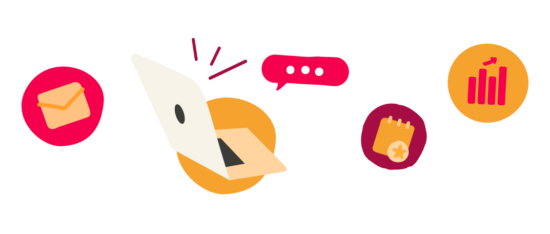
What is HR automation?
HR automation is a self-operating computerized service that allows HR professionals to manage personnel more efficiently and productively. Integrating automation into HR processes has changed the way that traditional HR teams operate. It’s helping with jobs that involve high-risk factors. It also helps organizations perform time-consuming HR tasks with great efficiency and consistency.
HR automation can aid with:
- Talent acquisition and training
- Onboarding and offboarding
- Performance management
- Compensation management and benefits administration
- HR analytics
- Time and attendance
- Compliance
Effective HR automation takes on time-consuming, repetitive tasks, thus enabling HR leaders to focus on higher-level responsibilities, such as strategically boosting engagement and retention.

The proven benefits of HR automation to reach business goals
The key to a successful HR automation strategy is finding the balance between technology and human interaction. To do that, you need to understand which tasks are most suited for automation.
For many, when it comes to HR automation benefits, highly manual tasks are the lowest-hanging fruit. According to research, 36 percent of businesses experience a lack of technology that automates and organizes certain HR processes such as various tasks within onboarding.
By upskilling to leverage the benefits of AI, HR practitioners can position themselves for greater success and stay ahead of the curve in their field.
A partner at KPMG told SHRM that some HR operations “have woken up and are leading a higher-purpose conversation on the trajectory of automation within their organizations. But far too frequently … other business divisions raise the issue, and HR is nowhere to be seen.”
But why should you care about HR automation? The answer is simple—with technology advancing at light speed, HR leaders who embrace automation can keep pace with competitors, satisfy team needs, and work in sync with other internal departments.

How automation benefits HR, managers, and team members
HR automation helps HR leaders maintain a competitive edge through:
- Improving the employee experience
- Providing organized, comprehensive data
- Remotely engaging team members
- Streamlining recruitment, training, and onboarding
- Decreasing compliance issues
- Reducing paperwork
- Efficiently accomplishing administrative tasks
But the benefits also spread further, from supporting your team members to helping gain stakeholder buy-in. The HR automation process helps:

Drive business success
By integrating Objectives and Key Results (OKRs) and Key Performance Indicators (KPIs) within HR automation systems, you can empower your team members’ performance to sync up with your overarching business objectives—a crucial alignment for driving success and demonstrating the value of HR initiatives.
Support individuals and teams
OKRs and KPIs help provide a clear framework for setting, tracking, and achieving goals at individual, team, and organizational levels. By putting specific, measurable goals in place, HR automation tools make sure that each and every team member’s efforts directly contribute to your overall success.
Prove the value of people programs with hard data
Integrating performance management features within HR automation tools enables the collection and analysis of data relating to goal achievement and team member performance.
This hard data is a powerful tool for proving the value of people programs and securing buy-in from decision-makers. By showcasing the direct impact of HR initiatives on your organization’s performance, HR leaders can more effectively advocate for the resources and support needed to foster a thriving workforce.

Key HR processes to automate
Research from McKinsey has shown that by the year 2030, 30 percent of hours worked today could be automated.
With this in mind, there are several key HR processes that are ideally suited for automation:
- Onboarding. As one of the most manual HR processes, automation is ideal for handling the heavy admin workload required by onboarding.
- Timesheets. Tracking timesheets manually is incredibly slow: With automation, it’s a breeze.
- Leave requests. Automated processes can manage straightforward leave requests and balance checking. They can also handle manager approvals and record-keeping.
- Performance management. Streamlining this dynamic process removes bias and supports accurate decision-making when it comes to performance-related goals.
- Offboarding. Exit interviews are time-consuming and can often be neglected. Automation helps you obtain actionable data without the paperwork.

While most HR functions can potentially be partially automated, there are five specific areas that will continue to require manual, hands-on work:
- People performance whole-system architecture. This needs a certain level of nuance, as well as a human-centric approach to design and optimization.
- HR and business strategy. Strategy requires complex decision-making that demands human insight and adaptability.
- Organizational effectiveness. This needs a tailored approach that fully aligns human efforts with your organizational goals.
- Change management. Change management relies on personal interactions to both navigate and instill change within your organization.
- Team member relations. Personal connections are built on trust and understanding—something that automation simply can’t replicate.
HR automation implementation and best practices
Embracing automation in your HR processes is a leap forward toward modernization and a strategic move to boost your efficiency, accuracy, and team satisfaction.
The key to a successful implementation lies in a balanced approach that aligns technology with human-centric practices to create a harmonious equilibrium.
Here’s how HR leaders can navigate their organizations through the process:
Welcome technological innovation
Embracing technology with an open mind is key for HR leaders. It’s important to view automation not as a disruptor or a distraction but as a tool that can truly boost your operational efficiency and the satisfaction of your team.
By mastering HR automation systems, you can simplify complex processes, adapt roles to fit new models, and set a positive example for any people who may be resistant to change.
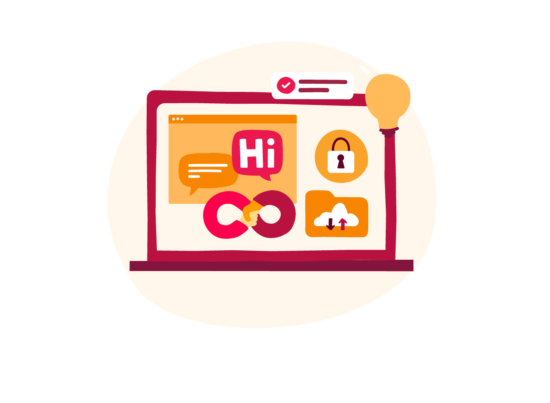
Involve your team in the process
Involving your team members in the automation process is a crucial part of a successful implementation journey. By engaging the people who will be end-users right at the start, you can gain valuable insights into their needs, worries, and suggestions.
This collaborative approach helps your team feel valued and heard and helps you tailor your automation strategy to best meet the needs of your team and the wider organization.
Identify goals and measure success
It’s important to set objectives that pinpoint what you aim to achieve with HR automation. Setting objectives also allows you to document the company’s goals and vision for success and provides a clear map of how using automation aligns with your people and business strategies.
The objectives you set will serve as the robust foundation of your successful automation implementation plan.
Integrating OKRs and KPIs into the automation strategy allows you to precisely measure your progress and outcomes and better define your overall success.
Enlist support from stakeholders
Securing the support of your top executives and key stakeholders is crucial to the successful implementation of HR automation.
Having their backing doesn’t just give you the resources and legitimacy you need but also showcases the strategic importance automation has within the organization itself.
Prioritize the human experience
Prioritizing the human experience at every step of your automation journey is key. Automation allows you to enhance, not replace, the human elements of HR functions—with the ultimate goal being to leverage technology to streamline time-consuming admin tasks.
This allows you to free up your time to focus on more strategic, value-adding activities such as working to find innovative solutions to industry challenges, helping to future-proof your organization, or further fostering a people-centric company culture—all tasks that truly need that human spark, insight, and creativity that tech just can’t replace.
By doing so, HR automation can enrich the workplace, making it more efficient, engaging, and fulfilling for everyone involved.

Key takeaways
- HR automation leverages technology to streamline repetitive tasks, allowing HR professionals to focus on strategic initiatives
- Effective automation strategies can enhance operational efficiency, improve the team member experience, and support organizational goals
- Implementing HR automation involves balancing technological innovation with human-centric practices to maintain a personal touch
- Engaging stakeholders and aligning automation with business objectives strengthens the impact of HR initiatives
- Automation empowers HR teams to be strategic partners, driving success and fostering an inclusive company culture
Trends in automating HR processes
Many, if not most, organizations are adopting HR technology to help them automate their processes, and the HR technology market has been growing at a rapid pace over the past few years.
In 2023, Josh Bersin expected things to slightly settle: “While roughly half of companies plan to increase their spend, the number cutting back almost doubled (from 5% to 8%), and I expect that trend to continue. And as hiring slows, so does the need for more HR software.”
But looking forward to 2024, Bersin believes that we’re going to see a pronounced difference in the way top-performing companies, dubbed “Dynamic Organizations,” utilize technology to streamline their processes: “Dynamic Organizations describe any company that embraces agile operating models, a culture of collaboration and change, and an ongoing commitment to transformation that’s rooted in market insights.”
Bersin goes on to state, “Our research reveals that this elite group of top performers is three times more likely to meet financial targets, 31 times more likely to engage and retain employees, and seven times more likely to innovate effectively than their peers operating with more traditional approaches.”
With so many elements involved in managing the hiring, performance, pay, and development of your workforce, there are many technology options for HR to consider when it comes to automating time-consuming tasks.
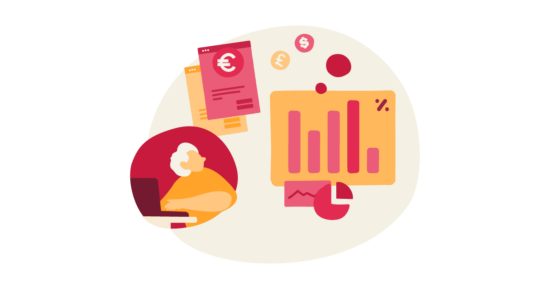
7 HR automation examples
If you want to identify HR tasks that you can potentially automate, start by examining the employee lifecycle. For each phase, there are likely processes you can modify to make them less manual.
In fact, there are several tasks automation can help streamline:
1. Recruitment
Recruiters can use automation to post to job boards, push selected candidates through various stages of your recruitment workflow, and help ensure that your potential new hires have all of the information and tools they need at every touchpoint in the recruiting process.
Plus, rather than creating new offer letters for all new hires, automation can also help hiring managers conduct a lot of the process through an Applicant Tracking System (ATS).
Then, once someone is hired, onboarding automation helps transfer their data into your HCM or HRIS so that they receive benefits enrollment and other relevant new team member information.
2. Onboarding
Onboarding is an administrative task-heavy process that requires ticking a lot of boxes. Automating some of these processes helps to iron out most, if not all, chances of human error.
Whether that’s making sure that employment contracts are prepared and sent, setting up new starter meetings with management, or setting up training schedules, automation—alongside your human touch—can help speed up your onboarding and make sure everything is ready for your new hires.
<<Find out how Payapps Limited saves hours every month on onboarding and payroll using Bob.>>
3. Training
If each team member has to complete compliance or other training every year, it doesn’t make sense for the learning and development team to assign that course to every person manually.
Instead, you can use automation in your Learning Management System (LMS) to enroll team members, track completion, and send reminders to encourage people to complete the training on time.
4. Managing performance
Managers often gather 360-degree feedback when writing annual reviews. Collecting and compiling that data takes time. If managers have access to an automated Performance Management System, they can send the request and collect feedback from one place.
Likewise, automation helps empower your people by enabling them to create and manage their work history and records, including employment milestones, timelines, and recognition.
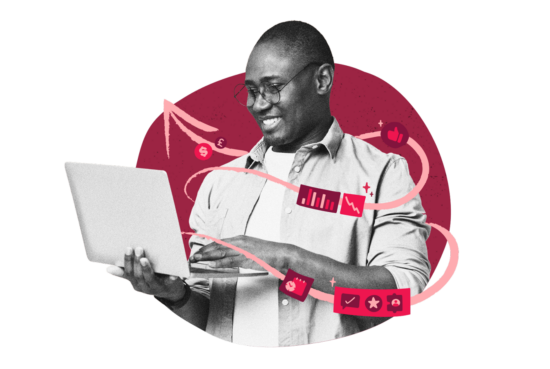
5. Organizing compensation
To simplify compensation processes, automation can enable your HR team to plan, set up, and manage compensation cycles. Likewise, a system can be set up to deliver automated alerts and notifications to ensure compensation planning is on track and on time.
<<Find out how TourRadar saves 40 hours per week by automating HR processes in Bob.>>
6. Administering benefits
Whether you’re offering healthcare, wellness, or voluntary benefits, you can track essential information with automation. Similarly, automation in benefits provides team members with easy (and self-serve) access to information about their current enrollment and plan options.
7. Offboarding team members
Just as automation helps you streamline the onboarding process when someone joins your organization, it can also help when someone leaves.
As a person’s status in the HCM or HRIS updates to reflect a separation, automation can help ensure they receive all the necessary documents and information about final pay, benefits, and access to their employment records.
This helps to streamline every separation and make sure the person leaving the organization has a positive exit experience.
Recommended For Further Reading
Best HR automation tools
Bersin predicts that in 2024, automation and AI will “dominate” the HR tech stack. “Now, we’re affecting the actual application use case of everything you do in HR,” he says. “Every screen, every panel, every interaction you have will be informed and improved and made more intelligent by AI.”
You can facilitate this automation by having one system that connects and supports your recruiting, training, performance management, and other apps under one roof.
A Human Capital Management (HCM) or HRIS platform is the piece in the HR technology puzzle that provides the overarching architecture you need. These are core HR systems that help employers manage team member records, job history, performance, and training.
As you consider the many ways you can automate HR with an HCM, make sure that you choose a system that will help you simplify your processes and increase HR’s capacity and productivity by automating:
- Applicant tracking
- Onboarding
- Training
- Performance management
- Compensation and benefits
- Team member profiles and self-service
- Offboarding
When organizations use the full power of an HCM, they automate time-consuming tasks. Rather than being bogged down with time-consuming processes or switching between multiple apps, integrated HCM technology allows people teams to focus on HR solutions to business-critical issues.
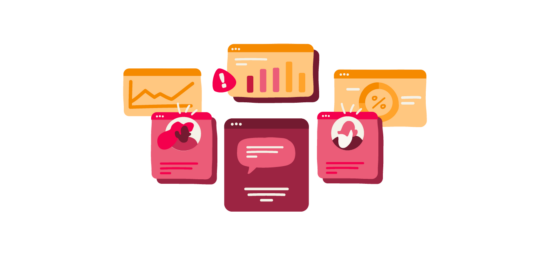
Automation: The future of HR?
HR tech and automation offer significant productivity and efficiency gains for HR teams.
Although most HR tasks require some level of decision-making, business acumen, or interpersonal skills, people teams can tackle some of the most time-consuming processes by leveraging HR tech.
There’s no denying that technology is transforming the function of HR. Every step of the employee lifecycle still requires HR’s involvement—but now you can do so as strategic partners who are supported and backed by a powerful, automated system.
Now is the time for HR to engage in conversations with IT, operations, and other stakeholders to maximize automation across your organization.
As automation takes on the heavy lifting of admin tasks, HR pros can lead the way in keeping people at the top of the organization’s agenda.

